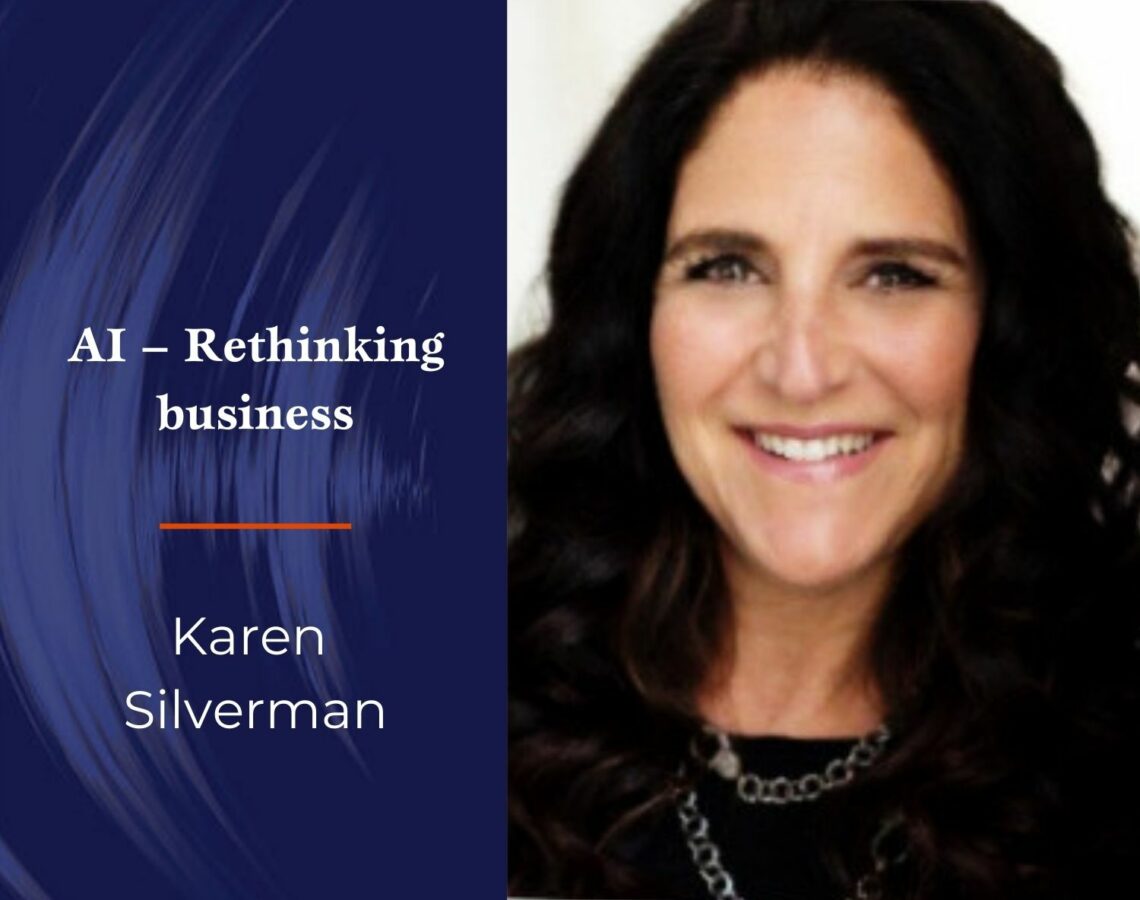AI – Rethinking business

AI and generative AI are capturing the headlines.
AI and generative AI are capturing the headlines. We know it will bring an era of rapid change, new opportunities, and new risks. The cost structure of expertise and repetitive tasks will shift fundamentally. Existing security protections against spoofing and phishing are now vulnerable, and employees are wondering what it all means for them. Developers of Generative AI are acknowledging the risks and asking governments and companies to lean in on regulation, governance, and controls. So what should boards and directors be thinking about all of this? And more importantly, what should they be doing?
In this podcast, Dr Sabine Dembkowski, Founder and Managing Director of Better Boards, discusses the implications of AI with Karen Silverman. Karen has dedicated her work to the practical aspects of technology governance, strategy, and policy and how it intersects with corporate governance. She is a member of the World Economic Forum’s Global AI Council and a WEF Global Innovator, a member of McKinsey’s External Technology Council, an advisor to the Business Roundtable, and a technology expert on the California Supreme Court’s Blue-Ribbon Commission on the Future of the Bar Exam.
Some of the key takeaways of the conversation include:
“It needs to get put on the agendas as a deliberative item”
Karen starts by explaining that there’s a lot of talk and inquiry from both the board and management. At the existential level, these technologies (and particularly the newest) are likely to impact cost structures across the business dramatically. How we value and pay for expertise and automate repetitive processes will change to have both cost and revenue impacts. If the issue is not on the agenda yet, it needs to be put on those agendas, not as a reported item, but as a deliberative item. Then boards are encouraged to get informed, ask questions, and interrogate management about the use of the technologies, the impact on business, and new categories of security risks. She cautions that for board effectiveness; these questions need to be discussed as part of the strategic conversation, not just in a compliance conversation. Thinking about it as integrated into the rest of the business is a good start.
“Start giving them access to resources, both internal and external”
Karen says that the first thing boards can do is start giving themselves and others access to resources and have someone keep an eye on technology. She notes that it is tough to keep up at a broad landscape level, but which technologies will impact the business needs to be identified. Some contextually relevant sources of information need to be created that boards have access to – both when they’re operating in committee and when questions arise in the course of business operations. This is not necessarily an internal organisational function. It could very well be an external resource that needs to be assigned.
“The rates of uptake create some urgency, but also it’s creating a level of anxiety”
Karen feels the urgency around AI is a by-product of how quickly these new technologies are coming online and being integrated into workflows. Chat GPT, for example, had 100 million users within a few months of its release. So incredibly high numbers are experimenting with it, learning to use it, learning what it does well and what it doesn’t, and how to manipulate it. Rates of uptake create urgency but also create a level of anxiety within the workforce and customer base that needs to be dealt with, whether this is warranted or not.
Karen explains that it creates a risk of disinformation and an “authenticity crisis.” We make assumptions about what is authentic and what is not, primarily based on what we see and hear. Now what we see and what we hear is going to be easily spoofed and replicated by these tools, which will cause a period of very uncomfortable uncertainty about relying on information sources that were previously reliable. All this will be disruptive to how business gets done and threaten the productivity of teams that are finely tuned for worlds where this is not a problem. This is, Karen believes, what is generating the current focus and sense of urgency.
“This belongs in the category of strategy and risk management as much as it belongs in the category of compliance”
Karen believes that boards need to ‘lean in’ to the issue. It needs to be on the agenda without waiting for management to decide it needs to be there and add it. Boards need to lean in and ask questions about where these technologies are being used within the organisation, for what purpose and to what end, and what is being done to defend against foreseeable risk. Boards must understand that this belongs in the category of strategy and risk management as much as it belongs in the category of compliance, which is how many organisations have been treating it up to now. Too many organisations are waiting and watching regulations develop across the world, to see what will be required. But businesses have to do things, make decisions, allocate resources and prioritise objectives and risks, and figure out ways to do that sensibly in the context of their business. Regulations and governance are never going to answer that question.
“Every industry is struggling with this in some way”
Karen advises that to avoid being overwhelmed, boards take a step back and hear the various reports from the CFO, the general counsel about data protection, and also the report about AI. They need to ask who is accountable within the organisation for that AI report and ensure they hear it.
Karen believes boards are not always well served by management and that these issues intersect and impact one another, so ensuring the organisation’s security risks or considerations run in alignment or intention with other parts of the business becomes much more important. She feels boards and management need to integrate better than in siloed structures.
The pace of strategic planning also needs to increase. Once a year means that what was decided 12 months ago may not be relevant anymore. The important issue for boards is to be more agile. Boards that have a strategic discussion every 2 or 3 months will be better placed to cope with the technology change rate.
The three top takeaways from our conversation are:
- AI promises ease and efficiency, but it requires (particularly of leadership) a heavier cognitive load and more thinking, work, and questioning. Lean in to the change.
- Consider how the values of the organisation are going to align, and guide it through periods of surprises, creating space to both deliberate and become educated.
- Stay curious and expect change. Part of what is holding people back is processing surprise, and they need to get beyond surprise to real leadership. There is a huge role in setting the tone, capabilities, and capacity of employees and customers to manage this change.
Don’t forget to subscribe never to miss an episode of the Better Boards Podcast Series. Available on Apple, Spotify or Google.
To find out how you can participate in the Better Boards Podcast Series or more information on Better Boards’ solutions, please email us at info@better-boards.com.



